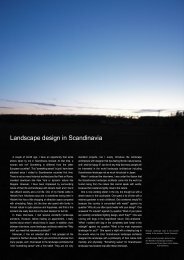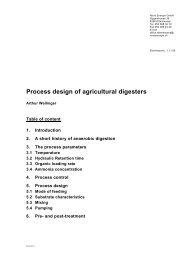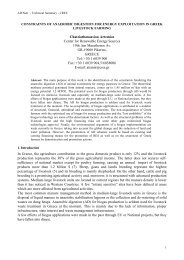III. No-Till Farming Systems - nifty
III. No-Till Farming Systems - nifty
III. No-Till Farming Systems - nifty
Create successful ePaper yourself
Turn your PDF publications into a flip-book with our unique Google optimized e-Paper software.
The continued evolution of no-till farming requires the sustained enthusiasm<br />
of all involved, including farmers, extensionists and scientists. New<br />
participants need to receive proper training and education in no-till farming<br />
techniques. Support at the national level is needed for no-till to continue<br />
to develop. Crop improvement trials need to be done under no-till<br />
conditions so that crop traits important to no-till are selected for. Likewise,<br />
fertility and agronomic practices need to be conducted on no-till<br />
managed land at the plot, field, and landscape scale to encounter the full<br />
range of production ecologies.<br />
Research is venturing into new areas such as how innovative cropping<br />
systems and residue management can influence soil biological activity and<br />
nutrient cycling. Biological tillage is replacing mechanical tillage, and<br />
more attention is being given to cropping systems and agronomic practice<br />
to control weeds and replace the myopic view of ‘herbicides only’. It is<br />
the responsibility of all involved in no-till to ensure that such efforts continue<br />
into the future so that no-till can be adopted on a far greater scale<br />
across the agricultural systems of the globe.<br />
This book aims to celebrate from where no-till has come, and to advance<br />
the concept by sharing the latest information and knowledge from around<br />
the world. New frontiers and the most recent developments are discussed.<br />
One of the most significant of these is the expanding interest in how carbon<br />
accumulation in agricultural systems can both enable greater adaptation<br />
to climate change and contribute to the mitigation of greenhouse gas<br />
emissions. The carbon markets are rapidly taking note of the vast potential<br />
for no-till systems to contribute to carbon offsets, thus opening up the opportunity<br />
for progressive farmers to gain additional income for their efforts<br />
to create more sustainable and productive no-till farming.<br />
Dennis Garrity<br />
Director General<br />
World Agroforestry Centre<br />
Nairobi, Kenya<br />
xii














